Under-watering your lawn can result in dry areas and Chinch bugs.
|
Diagnosis of Common Lawn Problems
CLICK THE ITEMS BELOW FOR SYMPTOMS AND TREATMENT
Lawn Insects & Pests
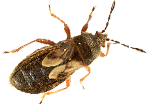 |
Chinch bugs mostly feed on St. Augustine grass but occassionaly feed on other types of grasses. The chinch bug sucks out the plant juices through a needle like beak causing internal injury to the grass.
|
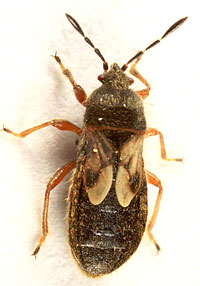
|
Description
Chinch bugs mostly feed on St. Augustine grass but occassionaly feed on other types of grasses. The chinch bug sucks out the plant juices through a needle like beak causing internal injury to the grass.
During the summer eggs hatch in 10 days and the young develop into adults in as little as 3 weeks.
Symptoms
Yellowish and brownish patches of turf. Problems are usually noticed first along concrete edges or in areas without adequate moisture receiving full sun.
Chinch bugs can be found by parting the grass runners in yellowed areas and observing the soil surface.
Treatment
Granulated insecticide formulas usually tend to be the most effective and long lasting.
|
 |
Sod webworms are the larval stage of a type of moth and may cause damage to most types of grasses, while Bermuda grass being the most desirable and bahiagrass being the least desirable.
|
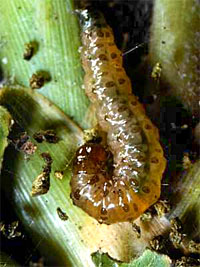
|
Description
Sod webworms are the larval stage of a type of moth and may cause damage to most types of grasses, while Bermuda grass being the most desirable and bahiagrass being the least desirable. The sod webworm is usually greenish with many black spots.
While sod webworms are usually not prevalent in enough numbers in Florida before June, the armyworms and loopers are usually present during the spring, summer, and fall.
Symptoms
Newly hatched sod webworms cause very little visible damage, but when they become full grown the feeding shows up almost overnight usually causing extensive damage by the time the results are noticable.
Treatment
Included in all Turf Tech lawn spraying services are the appropriate pesticides for killing webworms during all life stages.
|
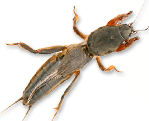 |
Mole crickets dmaage turfgrass in multiple ways, including tunneling through the root zone as well as feeding directly on the roots.
|
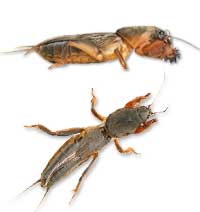
|
Description
Several species of mole crickets are prevalent in Florida, but the most common include the southern and the tawny mole crickets. Both species are believed to have been introduced around 1900 at the seaport of Brunswick, Georgia inside ships from South America.
The mole cricket has proliferated due to having few natural predators as well as having millions of acres of edible turfgrass.
Symptoms
Check of the drying out of the soil near the root zone. Visible tunneling near the soil surface should also be prevalent.
Treatment
Turf Tech deploys a custom blend of insecticides specifically targeted towrds the elimination of not only the mole crickets but the eggs too.
|
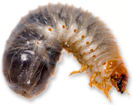 |
White grubs are actually the larval stage of the June beetle and the masked chafer beetle and damages grass by feeding on the root system.
|
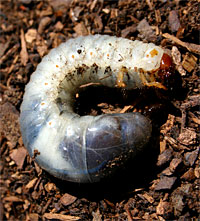
|
Description
White grubs are actually the larval stage of the June beetle and the masked chafer beetle and feed directly on the roots of turf grass.
To test for grubs, use a spade to dig around the edge of the area of grass that is yellowing approx 2 inches deep. Force the spade under the sod and lay it back looking for grubs or damaged roots.
Symptoms
Symptoms of white grubs include the yellowing and off coloration of grass during times of adequate precipitation.
Treatment
An application of professional strength insecticide is often necessary to wipe out the grubs.
|
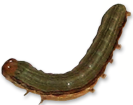 |
Armyworms are the larval stage of moths and feed on almost all tuf grasses. Armyworms are usually prevalent during the spring and summer and have a long, dark stripe down each side.
|
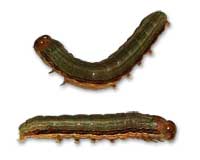
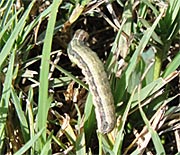
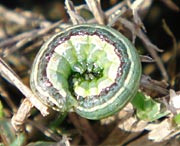
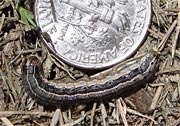
|
Description
Armyworms are the larval stage of moths and feed on almost all tuf grasses. Armyworms are usually a green to brownish color with a long, dark stripe down each side.
Symptoms
Injured grasses will have uneven notches chewed along the sides of the blades.
Treatment
Turf Tech deploys a custom blend of insecticides specifically targeted towrds the elimination of not only armyworms but all lawn catepillars.
|
Weeds
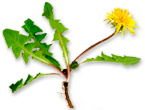 |
Dandelions are actually two species of an edible plant native to Europe and Asia named for their sharp, serrated leaves shaped like lions teeth.
|

|
Description
Dandelions are actually two species of an edible plant native to Europe and Asia named for their sharp, serrated leaves shaped like lions teeth.
Symptoms
Yellow, round flowers are the predominant sign of a dandelion.
Treatment
Turf Tech includes a specific formula, standard in all chemical mixes, designed to prevent the colonization of dandelions.
|
 |
Commonly seen in popular iconography as the "shamrock", the clover usually has three stipules protruding from the main stalk.
|

|
Description
Commonly seen in popular iconography as the "shamrock", the clover usually has three stipules protruding from the main stalk. Multiple mowings usually are not enough to deter the clover but often have the opposite effect of assisting in the proliferation of the clover.
Symptoms
Clovers are most recognizable by the three leaf pattern.
Treatment
Turf Tech includes a broadleaf weed control in all lawn applications that specifically targets the clover.
|
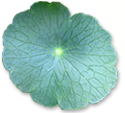 |
Dollarweed is an aquatic plant that thrives in wet, sandy habitat that also goes by its English name of pennywort. Dollarweed leaves are usually one inch round with a glossy texture.
|
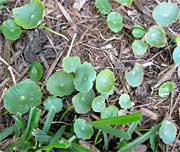
|
Description
Dollarweed is an aquatic plant that thrives in wet, sandy habitat that also goes by its English name of pennywort. Dollarweed leaves are usually round in shape approximately one inch in diameter with a glossy texture.
Symptoms
Dollarweed is most recognizable by the circular shaped leaves approzimately the size of a silver dollar.
Treatment
Turf Tech includes a broadleaf weed control in all lawn applications that specifically targets dollarweed.
|
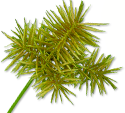 |
Sedge Grass is also known as nutsedge and thrives in overly moist soil. Once sedge grass becomes established it is difficult to control.
|

|
Description
The most common varieties of sedge grass include yellow nutsedge and purple nutsedge. Although nutsedge produces seeds, it mainly reproduces using small undergound tubors that connect to underground stems.
Symptoms
Sedge Grass is most recognizable by the bracts that form at the base of the flowers.
Treatment
Since sedge grass is tolerant of most herbicides, Turf Tech uses a combination specific pre-emergents and post-emergents specially designed to target sedge grass.
|
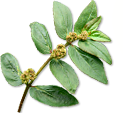 |
Spurge is a broadleaf weed that grows in a dense mat and is usually seen growing in the cracks and spaces in sidewalks or driveways.
|

|
Description
Spurge is very adaptable to grow in areas such as gaps in sidewalks or driveways. Spurge sap is secreted as a milky, poisonous fluid that can affect both humans and pets.
Symptoms
Spurge grows in a dense mat with two rounded leaves that grow in sets. Spurge is also identified by the hairy stems.
Treatment
Spurge is treated with a standard broadleaf weed control chemical that is included in all Turf Tech lawn spraying applications.
|
 |
Crabgrass grows up to 12 inches across and is an annual plant that leaves gaps in your lawn during the winter.
|

|
Description
Crabgrass thrives in lawns that are underfertilized, watered lightly, poorly drained, and growing thinly.
Symptoms
When crabgrass flowers it forms spike like branches. Crabgrass grows from seed annually and forms independent clusters.
Treatment
The best way to combat crabgrass is to apply a pre-emergent early in the season. Baking soda can also be a successful method of controlling crabgrass. A dense and healthy turf will prevent crabgrass from taking a foothold in your lawn.
|
 |
Buttonweed is a perennial that reproduces by both shoots and seeds. Like most weeds, buttonweed thrives in areas of high moisture or poor drainage.
|
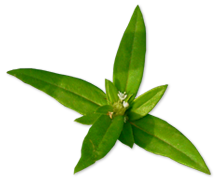
|
Description
Buttonweed is a perennial that reproduces by both shoots and seeds. Like most weeds, buttonweed thrives in areas of high moisture or poor drainage.
Symptoms
Buttonweed is easily identified by the small, hairy white flowers it produces during the summer and fall.
Treatment
Turf Tech deploys multiple applications of the broadleaf weed control chemical dicamba to combat buttonweed over large areas.
|
Lawn Diseases & Fungus
|

